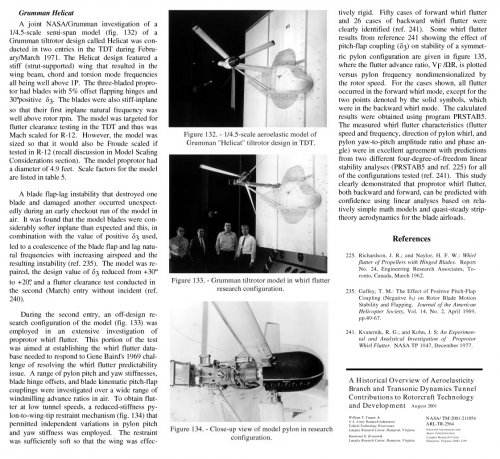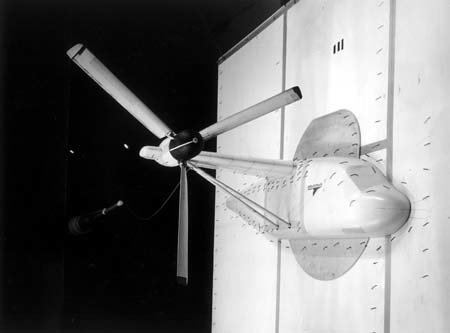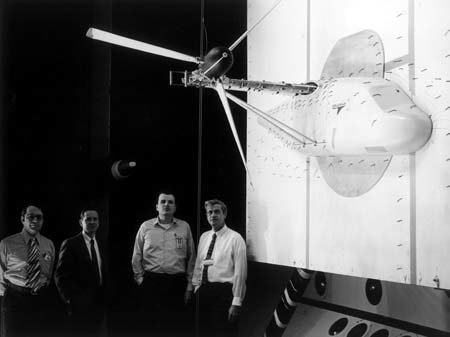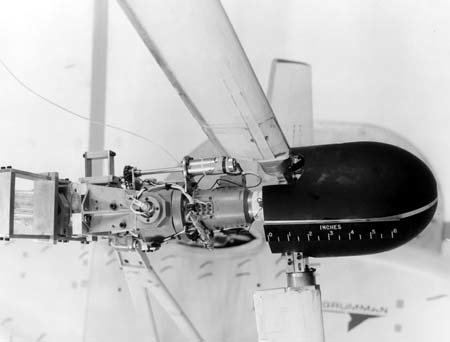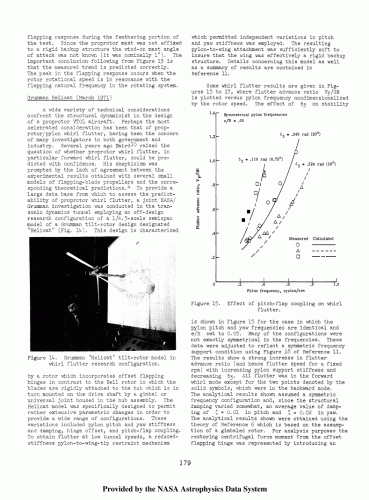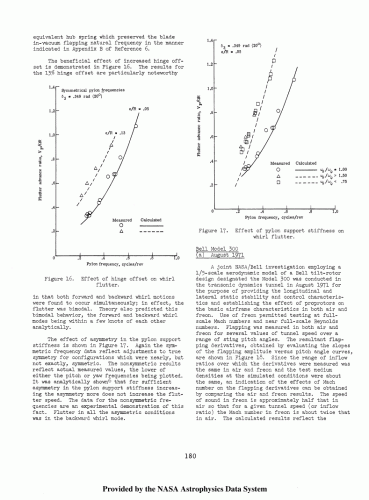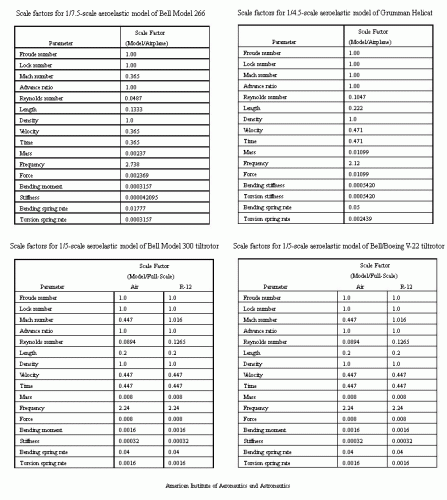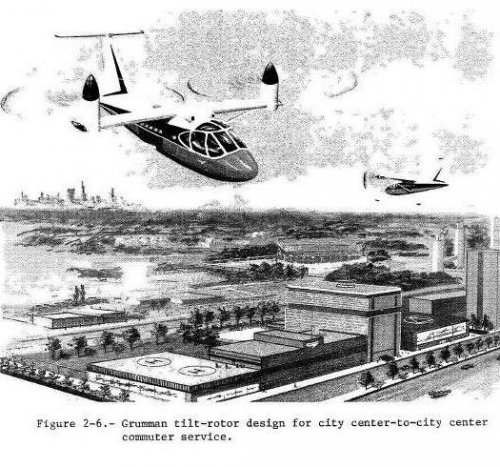- Joined
- 25 June 2009
- Messages
- 14,749
- Reaction score
- 6,112
Grumman « Helicat » (March 1971)
Source: http://www27.us.archive.org/stream/nasa_techdoc_19740026376/19740026376_djvu.txt
Source: http://ntrs.nasa.gov/archive/nasa/casi.ntrs.nasa.gov/20010057781_2001092650.pdf
Development of the Helicat design was done in 1970:
Source: http://www.libraries.wright.edu/special/collection_guides/guide_files/ms364.pdf
Source of attached article: http://books.google.fr/books?id=m0Jd3ZJhRcgC&pg=PA48
A wide variety of technical considerations confront the structural dynamicist in the design of a proprotor VTOL aircraft. Perhaps the most celebrated consideration has been that of prop-rotor/pylon whirl flutter, having been the concern of many investigators in both government and industry. Several years ago Baird 1 - raised the question of whether proprotor whirl lutter, in particular forward whirl flutter, could be predicted with confidence. His skepticism was prompted by the lack of agreement between the experimental results obtained with several small models of flapping-blade propellers and the corresponding theoretical predictions. To provide a large data base from which to assess the predictability of proprotor whirl flutter, a joint NASA/Grumman investigation was conducted in the transonic dynamics tunnel employing an off-design research configuration of a 1/4.5- scale semispan model of a Grumman tilt-rotor design designated "Helicat". This design is characterized by a rotor which incorporates offset flapping hinges in contrast to the Bell rotor in which the blades are rigidly attached to, the hub which is in turn mounted on the drive shaft by a gimbal or universal joint housed in the hub assembly. The Helicat model was specifically designed to permit rather extensive parametric changes in order to provide a wide range of configurations. These variations included pylon pitch and yaw stiffness and damping, hinge offset, and pitch- flap coupling. To obtain flutter at low tunnel speeds, a reduced-stiffness pylon-to-wingrtip restraint mechanism which permitted independent variations in pitch and yaw stiffness was employed. The resulting pylon-to-wing attachment was sufficiently soft to insure that the wing was effectively a rigid backup structure.
Source: http://www27.us.archive.org/stream/nasa_techdoc_19740026376/19740026376_djvu.txt
Tiltrotor aeroelasticity has long been a subject of attention for researchers at NASA-Langley’s Transonic Dynamics Tunnel (TDT). Whirl-flutter stability and dynamics of aeroelastic tiltrotor models such as the Bell Model 266, Bell Model 300, and the Grumman Helicatwere extensively investigated during testing at the TDT. The effects of pitch-flap coupling, flapping hinge offset, wing/pylon natural frequencies, wing aerodynamics, and altitude were identified. Langley-developed whirl-flutter analytical predictions were shown to be in agreement with the measured stability and response behaviors of these wind-tunnel models.
Source: http://ntrs.nasa.gov/archive/nasa/casi.ntrs.nasa.gov/20010057781_2001092650.pdf
Development of the Helicat design was done in 1970:
- Report PDR-511A-11 Helicat Aerodynamic Model and Full Cyclic Prop/Rotor System Vol. 1 Technical Proposal Grumman (Oct 1970)
- Report PDR-511A-12 Helicat Aerodynamic Model and Full Cyclic Prop/Rotor System Vol. 1 Price Proposal Grumman (Oct 1970)
- Grumman Helicat Presentation (c.a. 1970)
Source: http://www.libraries.wright.edu/special/collection_guides/guide_files/ms364.pdf
Source of attached article: http://books.google.fr/books?id=m0Jd3ZJhRcgC&pg=PA48

